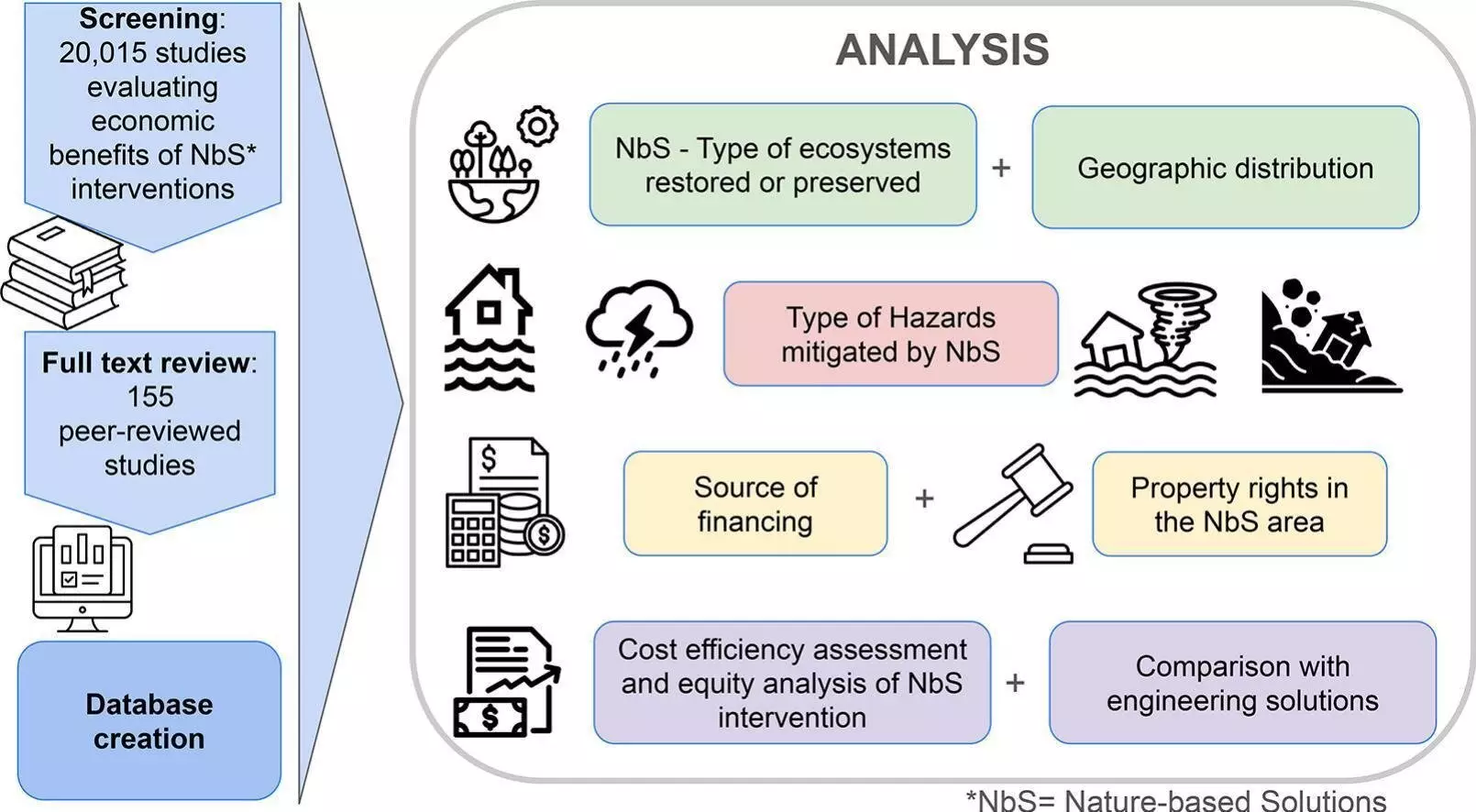A recent global assessment conducted by researchers at the University of Massachusetts Amherst has shed light on the effectiveness of nature-based solutions (NbS) in mitigating risks associated with a variety of disasters. These disasters range from floods and hurricanes to heat waves and landslides, all of which are projected to escalate as global temperatures rise. The study, featured in the journal Science of The Total Environment, highlights NbS as a cost-effective method for disaster risk reduction.
NbS involve the preservation, sustainable management, or restoration of ecosystems to provide benefits for both society and the environment. Rather than relying solely on engineering-based solutions, NbS offer a holistic approach to mitigating hazards. For example, restoring wetlands to address coastal flooding is considered an NbS alternative to building seawalls. This approach has gained recognition in major national policies and international agreements aimed at combating climate change.
Assistant professor of economics and public policy at UMass Amherst, Marta Vicarelli, emphasizes the importance of understanding the cost-effectiveness and equity outcomes of NbS. While traditional solutions have been the go-to approach for disaster mitigation, NbS have proven to be not only economical but also underappreciated in their benefits.
The research found that NbS were cost-effective in mitigating hazards in 71% of the more than 20,000 peer-reviewed studies analyzed. An additional 24% of studies indicated that NbS could be cost-effective under specific conditions. Ecosystem-based interventions associated with mangroves, forests, and coastal ecosystems were particularly effective in reducing hazards. Moreover, when compared to engineering-based solutions, NbS were found to be more effective in 65% of cases and partially more effective in 24% of cases.
Despite the proven effectiveness of NbS in hazard mitigation, many studies did not fully explore the additional benefits of these solutions. Factors such as biodiversity conservation, climate mitigation, and support for marginalized communities were often overlooked. These aspects are challenging to quantify and assign economic value, leading to the underestimation of NbS benefits.
One significant revelation of the study was that NbS have predominantly been funded by the public sector, even in cases involving private property. To maximize the global impact of NbS, additional funding from the private sector is essential. Vicarelli emphasizes the importance of a collaborative approach to financing nature-based solutions, involving both public and private investments.
The research underscores the underestimated potential of nature-based solutions in mitigating disasters. By recognizing the economic effectiveness and broader benefits of NbS, policymakers and stakeholders can prioritize these approaches for sustainable disaster risk reduction. Through a combination of public and private financing, the transformative upscaling of NbS can lead to more resilient and environmentally conscious societies.


Leave a Reply